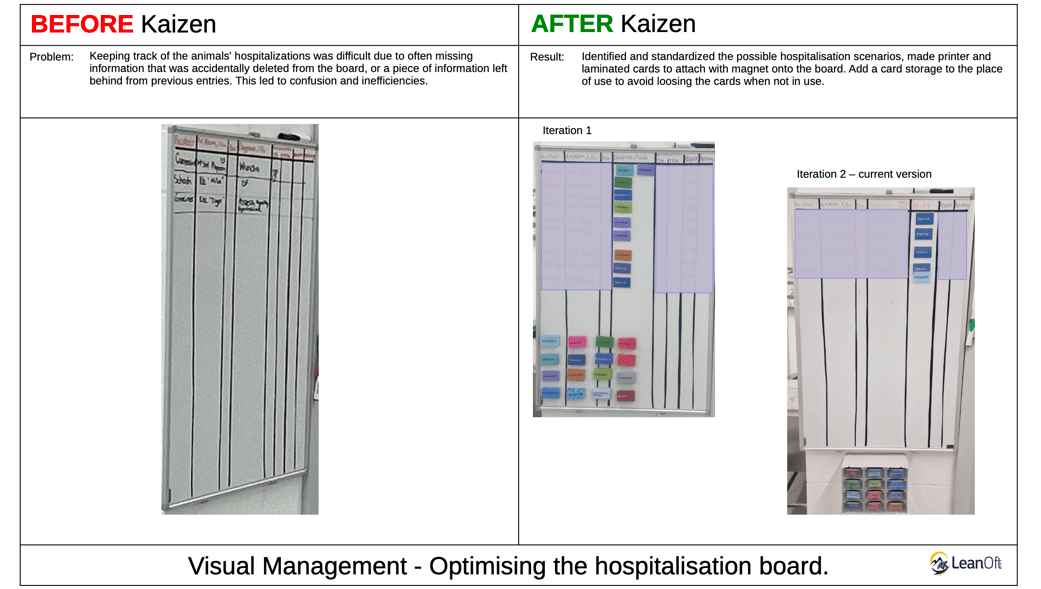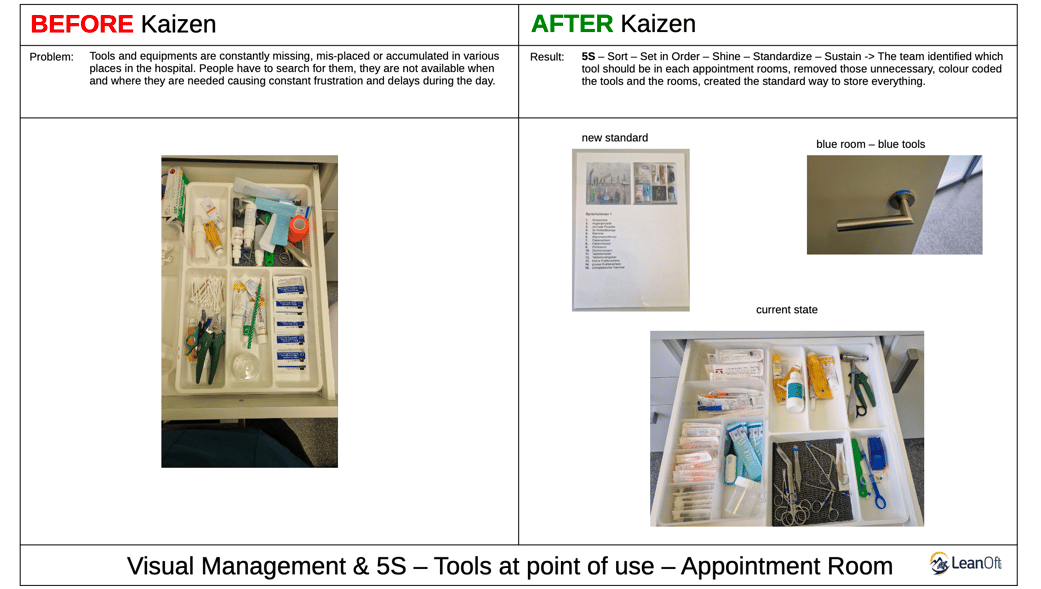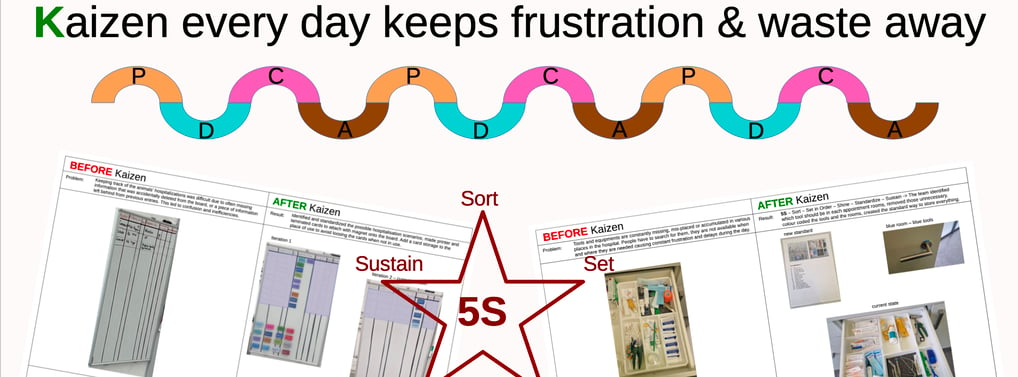How can one assess whether the actions taken as a lean consultant are indeed producing results?
Discover how embracing continuous improvement can help your business while you are helping other businesses overcome their constraints and thrive.
KAIZENCONTINUOUS IMPROVEMENTLEAN MANAGEMENT CONSULTING
Roland Kiglics
6/1/20249 min read
Introduction
There are numerous ways to gauge the impact of your work. One indicator is the number of new clients who are contacting you based on the positive feedback from your existing client base. This is a highly encouraging sign.
But there’s another way, if you can call it that. I suppose it’s a bit more subtle, but it feels really good to me!
The Journey
Let's imagine you've got your Lean Management consulting company, where you set out to change the world and spread the word about how Lean, the Toyota Production System and Kaizen are great for all sorts of businesses. Fortunately, this is 2024, and there are already numerous examples from the past ~40 years in any industry you could imagine. It's highly unlikely that you'll be the first doing lean in any industry. It's true that at the beginning, it can be tough to get started in any business. Especially at companies, where the owners, CEOs or managers themselves might not have heard of Lean before, which can be a good thing or a problem. It's not uncommon for what and how lean is thought in schools to differ from the actual practice and how it should be applied. This can create an even bigger issue because you need to undo what was thought wrong from the start.
Many people are resistant to change, even when it can greatly improve their business or quality of life. This is more often true for those with decades of experience, who are set in their ways and comfortable with the status quo. The notion of "if it ain't broke, don't fix it" can be difficult to overcome, even when change can lead to better results.
In the case of implementing Lean processes, many business owners and operations managers believe they are doing things effectively when, in fact, they are not. Despite the evidence that change is needed, they can be defensive when approached with the suggestion.
And of course, there are those wonderful people who are curious and open-minded. They are willing to give it a try, even though they have never heard of lean and don't really know anything about the Toyota Production System. They are open-minded and willing to listen to what you have to say. They respond to you: “We have got a few challenges on our hands, namely x, y and z. Would you be able to help us with these?” To keep it short, of course! And the collaboration starts.
Piece by piece, Kaizen by Kaizen, consultation after consultation, people are getting trained on lean principles and tools, solving problems and learning new things along the way. Each time, it's a new challenge and a new opportunity for growth - something new and exciting! And then, there's the magic of 'coffee conversations.' As trust builds over time, more and more issues are being not just discovered but shared willingly. Honest discussions are the bedrock of a Kaizen culture.
By simply listening and asking questions, I empower them to find their own solutions. I'll share my experiences if it helps, but I believe it's best for them to learn problem-solving skills. Even though these discussions are unscheduled, I still use Coaching Kata. This way, they learn problem-solving and eventually won't need me. It's fascinating how often, the initial reaction is “aha, ok...” and nothing changes. But a few days or weeks later, the same topics come up again. I ask if they want to focus on these topics and schedule a Kaizen event, or go through a set of questions with them, guiding them to identify the issue, their target condition, and obstacles. This might seem like the long road, but learning and building confidence takes time. The goal is for them to be able to do this on their own, even if I'm not there. It might seem counterintuitive to the untrained eye, but this approach is not about getting more money - it's about their development. My role is to be a guide, to facilitate the learning process, and to empower people to solve their own problems. That's what Kaizen culture is all about.
The clue of success
Then one day, several weeks or sometimes months into the work relationship, I'd be at the client and suddenly one of the employees or another time the owner of the company would pull me over and say, come look, look… check out what we did. And they show me with great enthusiasm what they have done on their own, based on one of the random conversations we had like two months ago. When I see it, I feel pure joy! First of all, it makes me so happy to see their excitement. They're so proud of what they've done, and it's well deserved! Secondly, I feel so happy because it's such a great feeling that all those chats were worth it after all. Was it exactly what they wanted? Is the solution they made perfect? I don't think it matters. Absolutely not! It's so important to remember that it's not about perfection. All we need to do is make it better today, than it was yesterday. What matters is that the message got through, they finally got it and started using their newfound knowledge to solve their everyday problems. I truly believe that this is what Toyota Kata and Kaizen are all about. This is what every Lean Consultant and any manager should be striving for. This means they value you, accept your inputs and lessons. Started something that will lead them on a path to great success by learning more on their own, by doing. It's all about trial and error, doing – failing – improving upon your first results, then more. This is how you end up with an organisation that is capable of continuously improving themselves even when you (the consultant) are not there. This is my goal as a lean consultant. I want my clients to learn what it means to do Kaizen, how to solve their own problems with their own resources, and to feel empowered to do so.
And then, of course, there’s the heavy lifting! That’s when I can really be useful as a lean consultant with hands-on support.
Let's be real here. For a small to medium-sized business, it's often not realistic to have a full team of lean specialists or managers running around. And they probably don't have their own moonshine team and shop, either! It's especially tricky when their business profile has nothing to do with manufacturing, as that's not what they're used to. This is how I come into the picture! I'm here to help! I provide training and hands-on support to tackle the more complex problems, help to get the moonshining done, and source the tools needed. Or, if they would like, I can also help with manufacturing the new tools or equipment for them. And in the meantime, for the smaller things, the everyday problems, I'm there to help people learn how to do it on their own. And everyone becomes a Lean Champion and a problem solver! No need to wait around for somebody to solve your problems. All you need is the tools and the knowledge, and you can do it!
I will probably be sharing more about the bigger projects we worked on and their outcomes in future posts. This is all about the little things that matter most to me because it shows how Kaizen, Lean, and TPS can apply for companies of any size. Applying Lean and doing Kaizen makes other people’s lives easier, which is so rewarding! This is why I do what I do, and it makes me really happy! I love helping businesses learn how to do Kaizen and apply the Lean principles in their daily work-life. It makes everything so much easier and more efficient!
Let us look at two examples of what was done by this team in the animal hospital I am working with:
Hospitalisation Board Improvement - Visual Management
The Problem: Keeping track of the animals' hospitalisations was difficult due to often missing information that was accidentally deleted from the board, or a piece of information left behind from previous entries. This led to confusion and inefficiencies.
The solution was to identify the various scenarios that could arise during an animal's hospitalisation and create a simple, colour-coded system of cards with magnets on the back. These cards could be placed on a designated board when needed.
The second issue came when they made the first solution. The number of variants was too high, which resulted in cards being misplaced or lost. There was also no designated place to store them when not in use.
Iteration 1 involved standardising the cards by identifying those cases that could be combined and reducing the number of possible variations. This was done both in the printed cards and in their system.
A stable holder for the cards was also installed at the point of use in a secure holder that was colour-coded the same way as the cards for easy identification.
What other applications could this be used for?
One potential use is in a human hospital. While these examples may not be a direct one-to-one copy, it is important to remember that you should never simply "copy and paste" any lean solutions you have seen. Instead, it is essential to understand why a solution was implemented in a particular way and then adapt it to fit your own circumstances.
In a manufacturing environment, these cards can be used to mark certain points in production for special attention or to indicate areas where, for example, preventive maintenance is required. The options are limitless, so use your imagination.
Why don’t they use a digital board?
This is a topic I am particularly interested in. It is a complex question, so I will not attempt to answer it here. However, I would like to make the following points:
Once the process has been stabilised, it may be possible to consider digitalisation as a solution, but never before or as a first step.


Appointment Room Tooling Improvement - Visual Management & 5S
The Problem: Tools frequently fail to be present or are misplaced. It is unclear which tool belongs in which room, and there is a tendency to accumulate too many of a particular tool in one room while others are completely missing.
The solution: Tools were identified for each room and those not required were removed. Colour coding each room on the door and labelling each tool with the same colour has greatly simplified tool location and identification. The tool drawer was organised, a photo of the desired standard condition was taken, the tools were marked and named, and a list was created of what should be there and where. The photo was placed in the room and in the drawer for easy control.
Where else can this be used?
This is literally anywhere, where tools are used. The options are limitless, just use your imagination.
Follow the basic principle: Tools and equipments should be at the point of use and not in a remote “secure” centralized storage place. “A place for everything and everything in its place” – It is the idea that everything should have somewhere to be stored (point of use) and that it should be neatly returned there after use.
Why not implement an open settings option so that the relevant tools are always visible to users?
I will probably cover in a forthcoming post in more detail how improvement implementations costs and benefits can be assessed. For now, I will simply say that it is crucial to understand what benefits a change will bring and what it will cost to the business. This is a complex topic. In this example: An iteration could be performed to implement an “open and always visible” solution, but this would require the entire cabinet in the appointment room to be replaced. Due to space and cost constraints, this is not possible at this time.
Could the tools be placed on the wall (hanged with a magnetic stripe) instead? Have you ever observed a cat attempting to leap to a height of two metres to evade a potential threat or an uncomfortable situation? While not all cats exhibit this behaviour, some are known to be highly unpredictable and may resort to jumping in an uncontrolled manner, potentially causing injury to themselves and those attempting to care for them. It is therefore imperative to implement a robust safety protocol to protect the animals and the team from harm, regardless of the high level of care and professionalism involved in their handling.


Conclusion
Working with other people is fun especially if you gain motivation from their success and happiness. I believe most, if not all Lean professionals are like that by default. Share your knowledge, enable people to do their business more efficiently and they will come back to you.
Book Your First Consultation
Get in touch to discuss how LeanOft can help you today.
Get to know us
Do you prefer personal contact over a form? Take the opportunity and write an email to get to know LeanOft and the people behind it.
Quick and Direct Access
Give us a call:
+41779456508
LeanOft GmbH provides hands-on, People-Centered Lean implementation support and problem solving for organizations that want to be better tomorrow than they are today.
LeanOft GmbH is primarily based in Switzerland and is working with companies in Switzerland and in Europe
Follow us
COPYRIGHT © 2025 LeanOft GmbH


+41779456508


